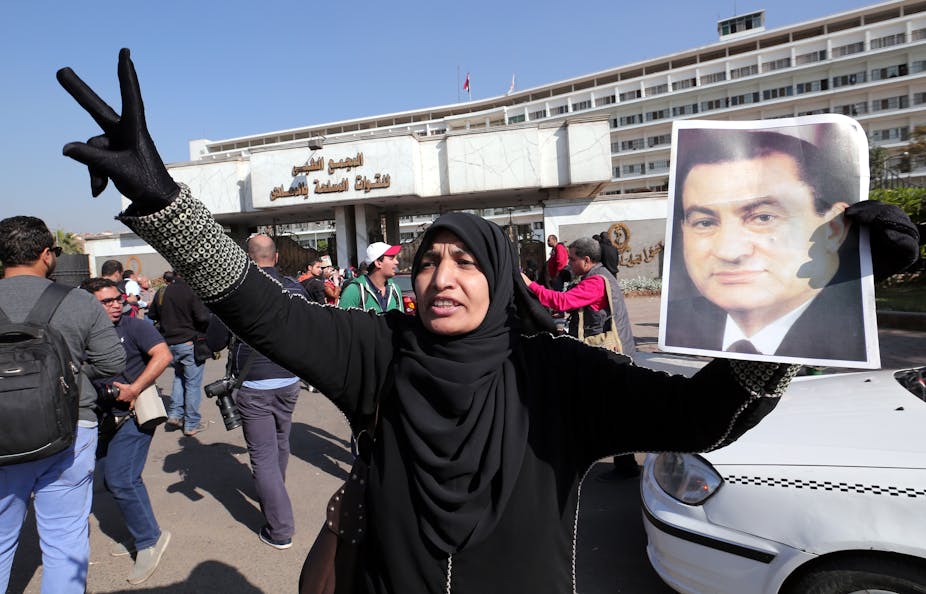On Saturday November 29, the former president of Egypt, 86-year-old Hosni Mubarak, was cleared of the manslaughter of approximately 900 protesters during the 2011 uprisings and is soon to be released. Condemned to a life sentence in June 2012, the former Egyptian dictator has also been cleared of charges of corruption and will soon walk free.
The decision has upset Egypt’s already fragile internal balance, and protesters are gathering in Tahrir square once again.
Mubarak’s 30-year dictatorship was brought down after 18 days of protest in 2011, which challenged the dictator’s brutality, high level of corruption and temporarily toppled the “deep state” that had been ruling Egypt since 1981. Mubarak did not leave willingly, and the uprisings of January 25 2011 saw hundreds of protesters in Cairo’s Tahrir Square brutally killed by government forces while thousands were arrested.
The previous Egyptian dictator was therefore being charged with manslaughter of protesters and murder, together with corruption charges related to gas exports to Israel. Now that all accusations have been dropped, on the allegation that they were “politically motivated”, popular rage has enveloped Egypt once again.
Counter-revolution
Activists have been protesting in Cairo for days. Over a thousand people gathered to express their fury; the police responded with tear gas, water cannons, birdshot and live fire, and dozens have been arrested. Two have been killed, and nine have been left severely wounded.
Al-Sisi’s brutal reaction to the chaos enveloping the country once again is unsurprising. Egypt’s military ruler has surrounded himself with Mubarak’s old guard and his policies suggest that Mubarak’s deep state never went away, but merely changed its name. This view holds sway across Egypt: as Sayid Abdel Latif, one of many parents who lost children during the uprisings, put it: “Is there anyone who would put himself on trial? Mubarak’s regime is still in place.”
Given Mubarak’s age and health, had he been found guilty, the verdict would have been largely symbolic. Despite this, he would have still have been held to account for the events of 2011 – meaning the sacrifice of those who died protesting against the old regime would be recognised. And the legacy of 2011 would be secured and a form of closure from the Mubarak regime would be achieved, albeit again, purely symbolically.
Instead, this verdict is another phase in the process of erasing the memory of the 18 days in Tahrir Square in 2011. Assuming normal legal procedures are followed, Mubarak will be a free man in the coming days.
Ultimately, Mubarak’s trial could have offered Sisi’s Egypt the closure it needs to move on. Instead, this verdict has poured kerosene on the anger in the streets of Cairo, increased tensions across the state, and deepened the suspicion that Mubarak’s deep state remains essentially intact. This view is shared across Egypt, and reflected in Latif’s anger: “The January revolution is over; they ended it.”
Al-Sisi rode into power on the back of rising security concerns across Egypt, with many Egyptians believing that the former field marshal was the man to restore law and order across the state. But ever since he took office, Egypt has been stuck in the same old morass of security threats and economic chaos.
In addition, there’s growing anger at the repression of opposition figures and critical media outlets, with no better example than the arrest and continued imprisonment of three al-Jazeera journalists.
Hope springs
Egyptian activists have said Mubarak’s absolution represents the counter-revolution at its peak. But the court’s decision has galvanised the heavily repressed revolutionary groups into action once again.
Sharaf Amal, spokesperson of the April 6 Youth Movement, argued that these events, coupled with the state’s extravagantly harsh response, might bring activists and Islamists back together. After all, both groups were heavily represented in the ensuing protests.
While that might not be enough to topple al-Sisi’s regime, renewed popular fury could be enough to shake it, and to prove that Egypt’s revolutionary tide has not been turned back for good.

